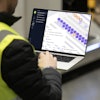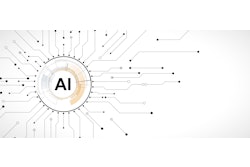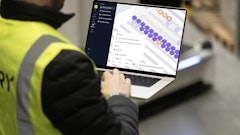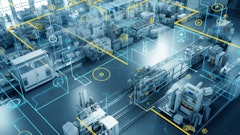
The last several years have seen a seismic shift for industrial supply chains worldwide. Driven by technological advances, geopolitical realignments and shifting customer expectations, manufacturers have had to adapt deeply and quickly. The International Society of Automation (ISA) is seeing several major trends influencing the supply chain and manufacturing industry.
For starters, manufacturers and supply chain organizations that embrace new technologies and trends while creating opportunities for workforce training will be best positioned for success in the years to come.
Digital transformation and Industry 4.0
Smart factories are rapidly becoming the norm. Connected via the Industrial Internet of Things (IIoT), these facilities deploy sensors and big data analytics to increase efficiency. Deloitte found that an asset’s overall productive capacity can decrease by 5-20% due to poor maintenance strategies. Predictive maintenance supported by plentiful and accurate data, robust infrastructure and a skilled workforce can help reduce unplanned downtime and optimize operations.
Digital twins, virtual replicas of physical systems, are gaining traction in both production and facility design. They allow manufacturers to simulate processes, identify bottlenecks and evaluate reshoring feasibility without physical trials. These technologies combine to form the backbone of smart, agile, data-driven manufacturing.
AI, Generative AI and advanced analytics
Artificial intelligence (AI) and especially generative AI are reshaping supply chain planning. According to EY, about 40% of supply chain organizations are investing in generative AI for demand forecasting, risk simulation, procurement negotiation and predictive maintenance. KPMG also highlights AI’s role in granular cost-to-serve analytics and prescriptive supply chain optimization.
In manufacturing, AI-powered tools help simulate complex production flows and improve decision-making under uncertainty.
Reshoring and nearshoring
COVID-19 disruptions and uncertain global trade dynamics have accelerated reshoring and nearshoring efforts. Many U.S. firms are moving manufacturing closer to home in response to potential tariffs and domestic incentives. In the U.K., companies plan to invest $650 billion over three years in relocating production.
Crucially, digital twins support the reshoring trend by optimizing facility design and supply chain layout virtually.
Flexible production via microfactories
Microfactories, which are smaller, decentralized production facilities, allow companies to respond to local demand quickly and reduce logistical complexity in support of reshoring goals. These facilities are often highly automated and digitally connected, allowing agile production that can be easily scaled or reconfigured based on shifting customer needs. By manufacturing products closer to end users, companies can shorten lead times, reduce transportation costs and improve supply chain resilience by minimizing exposure to global disruptions. An ISA position paper explores how automation underpins resilient supply chains.
End‑to‑end visibility enhances agility
End-to-end supply chain visibility is a strategic must-have. Digital supply chain networks, blockchain, IoT and RFID enable real-time tracking of materials and shipments. Control towers, digital twins and advanced machine learning applications enable concurrent planning and rapid scenario modeling, transforming how organizations respond to disruptions, demand surges and capacity bottlenecks. Autonomous UAVs paired with blockchain are also being trialed for warehouse inventory and traceability.
Cybersecurity: A top supply chain risk
As AI usage increases in manufacturing operations, cybersecurity is becoming a top concern. Rockwell Automation’s recent research found that cybersecurity is the second-biggest external risk behind only supply chain disruption itself.
Best practices include adopting industry standards for cybersecurity and conformity assessment programs, such as the ISA/IEC 62443 series of standards. These frameworks are designed to secure industrial automation and control systems against both intentional and unintentional incidents. Manufacturers and critical infrastructure sectors are urged to embed cybersecurity into organizational culture and require products and systems from vendors to comply with ISA/IEC 62443.
Workforce development and the connected worker
In all of this, the human element is essential. Advanced technology can’t live up to its potential without a skilled and knowledgeable workforce. Automation depends on people to make the world a better place.
Connected worker strategies like integrating technology, tools and training empower employees to make decisions based on real-time data, bolstering productivity and adaptability. Education initiatives like certificate programs as well as digital support tools help ensure the workforce is ready for our evolving technological landscape. ISA trained more than 14,000 automation professionals last year; not only engineers and managers, but also technicians. The demand is clearly high.
Collaborative robots (cobots) are also increasingly common, supporting human workers with repetitive or hazardous tasks. Automation’s greatest benefits are realized when it builds on human capacity and frees us up for creative thinking.
Implications and strategic takeaways
- Investment in digital infrastructure (IIoT, AI, digital twins) is no longer optional — it’s essential.
- Risk-informed supply chain redesigns, including multi-sourcing and buffer inventory, must become integral parts of planning.
- Reshoring and nearshoring, supported by automation and simulation tools, can reduce risks while promoting economic resilience.
- Human–machine collaboration and workforce development are central to growth. Advanced technologies will continue to aid (not replace) human intellect.
Looking ahead
Manufacturing trends in the supply chain are currently defined by the integration of AI and automation, a focus on data-driven decision making and continuous workforce empowerment. Over the next decade, expect:
- Further integration of generative AI into decision-making workflows.
- Widespread digitization extending to raw materials suppliers.
- Norms shifting toward onshore/geographically distributed production.
- Automation with intention, strategically enhancing human capabilities, creativity and intellect.
Supply chain organizations that embrace these trends — particularly those around resilience and workforce digital readiness — will be best positioned for success in the evolving global economy.













![Pros To Know 2026 [color]](https://img.sdcexec.com/mindful/acbm/workspaces/default/uploads/2025/08/prostoknow-2026-color.mduFvhpgMk.png?ar=16%3A9&auto=format%2Ccompress&bg=fff&fill-color=fff&fit=fill&h=135&q=70&w=240)



